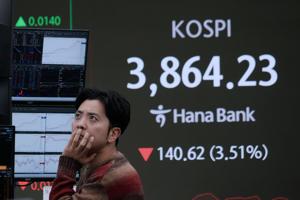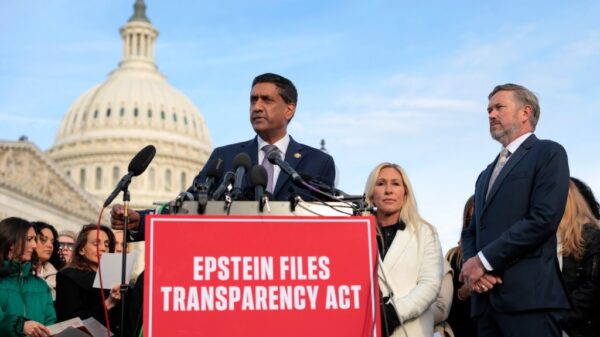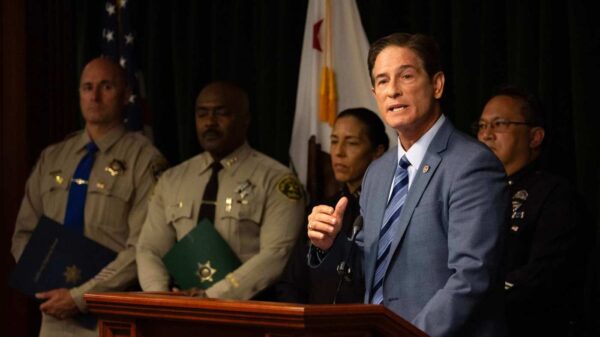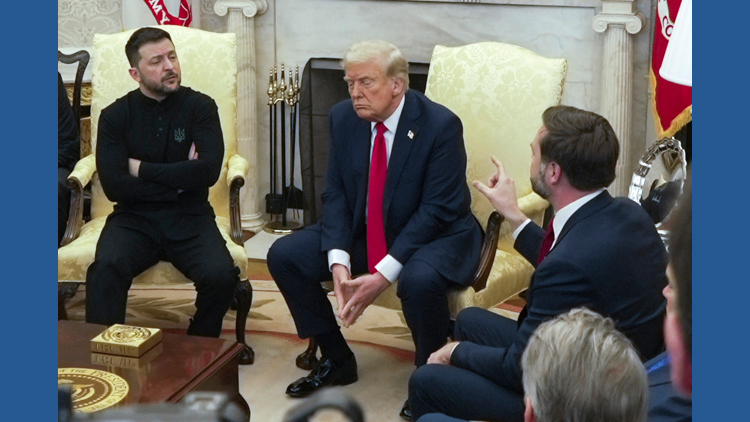President Donald Trump has introduced a controversial 28-point plan aimed at resolving the ongoing conflict in Ukraine. This proposal, which seeks to pressure Ukrainian President Volodymyr Zelenskyy into making significant concessions, has reignited tensions between the two leaders. Trump asserts that Zelenskyy lacks the necessary resources to continue fighting, suggesting a settlement that heavily favors Russia.
During an appearance in the Oval Office, Trump expressed confidence in his plan, stating, “We think we have a way of getting peace.” He expects a response from Zelenskyy by next Thursday, underscoring the urgency with which he believes the situation must be addressed. As Ukraine confronts mounting challenges—including a corruption scandal within its government and persistent Russian attacks on its energy infrastructure—Zelenskyy faces what he describes as perhaps the most daunting decision in Ukraine’s history.
Zelenskyy and Trump have a complex history, marked by their first interaction in 2019 when Trump attempted to leverage Zelenskyy’s position to investigate political rival Joe Biden. That phone call ultimately led to Trump’s first impeachment. More recently, during a fraught Oval Office meeting earlier this year, Trump and Vice President J.D. Vance criticized Zelenskyy for not expressing sufficient gratitude for over $180 billion in U.S. military and humanitarian aid sent to Ukraine since the war began.
In the latest proposal, Trump is urging Zelenskyy to concede territory in the eastern Donbas region to Russia, despite significant portions of this area still being under Ukrainian control. Analysts from the independent Institute for the Study of War estimate that fully capturing this territory could take the Russian military several years, given its current slow rate of advance. Nonetheless, Trump insists that Ukraine is inevitably losing ground, stating, “They will lose in a short period of time.”
The formal presentation of this plan occurred during a meeting in Kyiv, led by Dan Driscoll, the U.S. Army Secretary. Driscoll’s team was reportedly unaware of the trip until shortly before it occurred, indicating a lack of coordination within the U.S. administration. Following the meeting, U.S. officials indicated that the Ukrainians viewed the proposal as a preliminary framework for negotiation, though the extent of Trump’s patience for further discussions remains uncertain.
The pressure on Zelenskyy intensifies as he grapples with the fallout from a corruption scandal involving kickbacks for contracts with Ukraine’s state-owned nuclear energy company, resulting in the resignation of several high-ranking officials. Political economist Konstantin Sonin from the University of Chicago noted, “Zelenskyy’s back is against the wall,” suggesting that agreeing to the U.S. proposal could jeopardize his government’s stability.
Zelenskyy must also contend with the implications of Trump’s plan, which includes provisions that could be perceived as humiliating for Ukraine. One stipulation calls for elections to be held within 100 days of the agreement’s enactment, while another mandates the abolition of discriminatory measures against media and education in both countries. This could be seen as legitimizing President Vladimir Putin’s narrative regarding the justification for the invasion, complicating Ukraine’s position even further.
The ramifications of Trump’s proposal extend beyond the battlefield. Ukraine is currently enduring significant strain due to relentless Russian aerial assaults that have caused widespread rolling blackouts. As winter approaches, the prospect of managing these challenges adds to the urgency for Zelenskyy to navigate his next moves carefully.
The proposal’s cultural demands, which include rejecting “all Nazi ideology and activities,” could further alienate Ukraine, given that far-right political support in the country has historically been marginal. Military historian David Silbey remarked that accepting such terms would undermine Zelenskyy’s credibility with his constituents.
As negotiations unfold, the world watches closely to see how Zelenskyy will respond to Trump’s plan and what the implications will be for the ongoing conflict in Ukraine. The stakes are high, not only for Ukraine’s territorial integrity but also for its standing in the international community as it faces a pivotal moment in its history.








































































